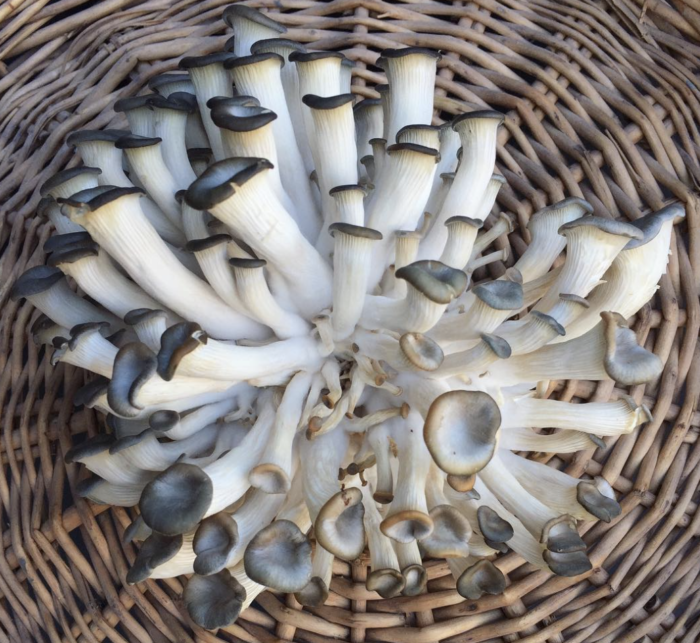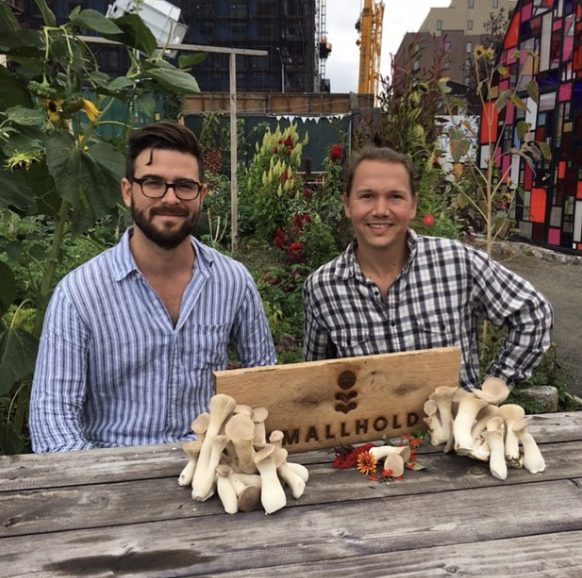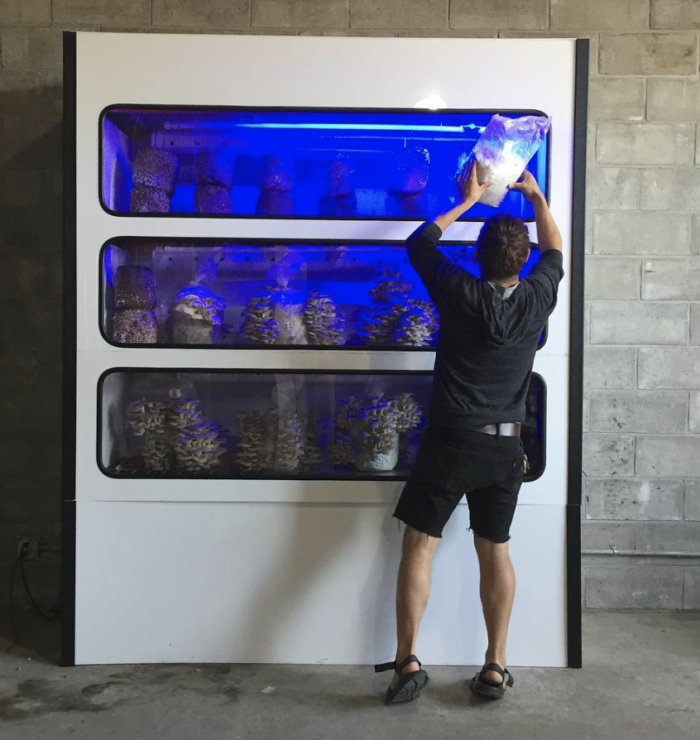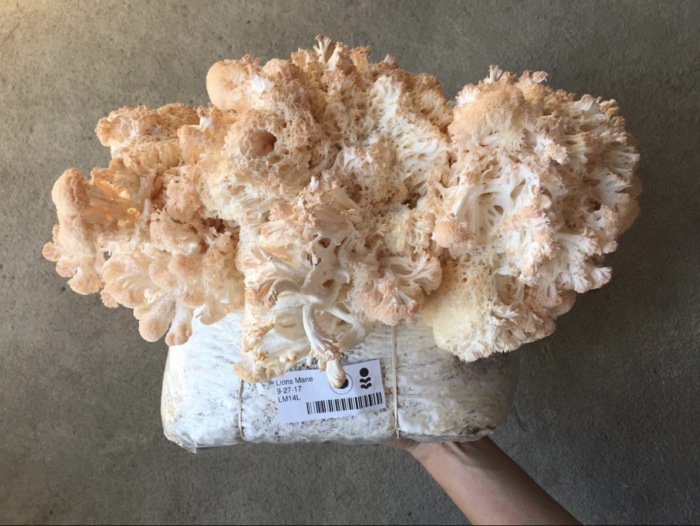Where Mushrooms Grow Just a Few Feet from the Table
A Brooklyn food-tech startup, Smallhold, puts its "minifarms" right in the restaurant where they'll be served
The company's blue-oyster mushrooms, small but flavorful (All photos courtesy of Smallhold)
In the drive for the absolutely freshest possible ingredients, the farm-to-table movement has reached this point: a Bushwick company is growing crops inside the restaurants they supply.
The company is Smallhold, a distributed farm startup, Its first product is the mushroom, which is being grown in two city restaurants–Bunker in Bushwick and Mission Chinese Food in Manhattan–that lease small, refrigerator-sized units controlled by Smallhold from its headquarters. “There is demand for extreme freshness, the freshest possible,” said Andrew Carter, the company’s co-founder and CEO. “The result is the mushrooms look better and are better nutritionally.”
Call it the vegan version of the lobster tank.
Carter is part of the vertical-farming movement, away from large industrial farms to smaller operations that don’t require a lot of land. After graduating from the University of Vermont, he consulted on hydroponic farming around the city and was involved with the notable Brooklyn agricultural-tech project WindowFarm, which in 2012 raised more than $250,000 on Kickstarter for a kit that grows vegetables from hanging containers.

The founders: Andrew Carter, left, the CEO, and Adam DeMartino, the COO
The availability of Wi-Fi connections is one of the keys to making the Smallhold system work. The company grows the mushrooms to three-quarter ripeness in Bushwick and other farms around New York. Then they’re sent to the climate-controlled units linked by Wi-Fi and hooked up to a water supply. Smallhold employees monitor the units for the right mix of CO2, humidity, temperature and other conditions.
Mushrooms require a controlled environment and, as a fungus, their life process is not plantlike. They process oxygen as animals do: they take in oxygen and emit CO2. And there’s a special trick to mushroom farming. The mushroom must be fooled into thinking it has to reproduce before winter comes. Farmers manipulate temperature, water and CO2 levels to do this, which results in a crop that can double in size in 24 hours.

Smallhold’s “minifarms” carefully control growing conditions including air, water and light
The restaurants rent the units and also pay a per-pound price that can range from $5 to $12. When the crop is ready, the chefs harvest them for the dishes they are preparing. The company also operates a North Brooklyn Produce Hub, a repurposed shipping contained outfitted with the company’s minifarms to supply nearby restaurants with fresh mushrooms.
Mushrooms are not the only crop that can be grown this way. Carter says the company is working on extending its products to lettuce, herbs and other vegetables. “We are focusing on mushrooms right now due to the demand by the market. Leafy greens will be further down the road.”

Lion’s Mane mushrooms, reminiscent of sea coral, are said to have many health benefits
Mushroom farming has a peculiar history in the U.S. The vast majority of mushrooms supplied to the East Coast are grown in a small area in southeastern Pennsylvania that was first developed by Italian immigrants in the late 19th century. Because mushrooms don’t require a lot of land to grow, they were an ideal crop for immigrants who lacked capital. And they were close to big restaurant markets along the East Coast that were happy to include mushrooms to enrich and extend dishes from all manner of ethnic cooking.
Smallhold is following the high-tech, small-scale version of that strategy with a market plan to increase the number of restaurants it serves this year. Carter says the company is working on providing a variety of mushrooms that will include oysters (blue, yellow and pink), king and pioppino types.
Kevin Doyle, who runs Forest Mushrooms in St. Joseph, Minn., and has been growing the crop for more than 30 years, called the Smallhold system an intriguing innovation. “It’s in the perfect location to serve the biggest restaurant market in the U.S.,” he said. “Anything that shows people how mushrooms are grown is good for the rest of the market.”
For more on food and tech, read our stories about 12 cool startups, a food-tech pitch contest, and our podcast with the founder of a digital dashboard for indoor farmers.
To grow other crops like lettuce and herbs, the ventilation system must be changed to accommodate how plants process air: CO2 in, oxygen out. The company is careful to filter air from the units to avoid any allergens getting out into the restaurants.
Carter feels at home growing mushrooms in Brooklyn, he says, because he has so many colleagues at the intersection of farming and technology. “There is so much support here. The ag and food scene is very large. It’s great to be a part of it.”










